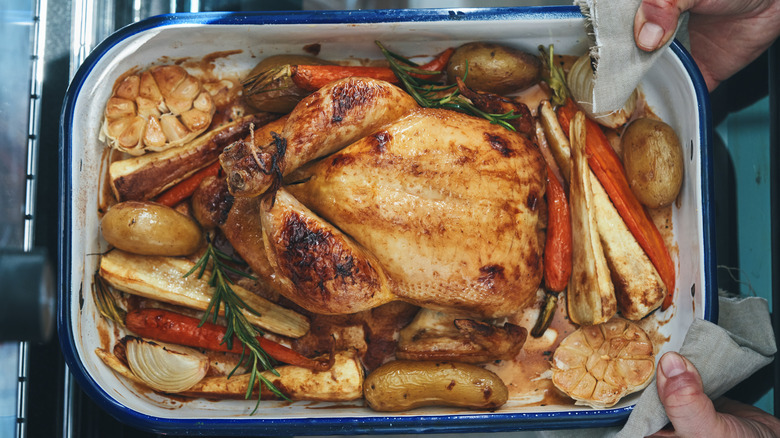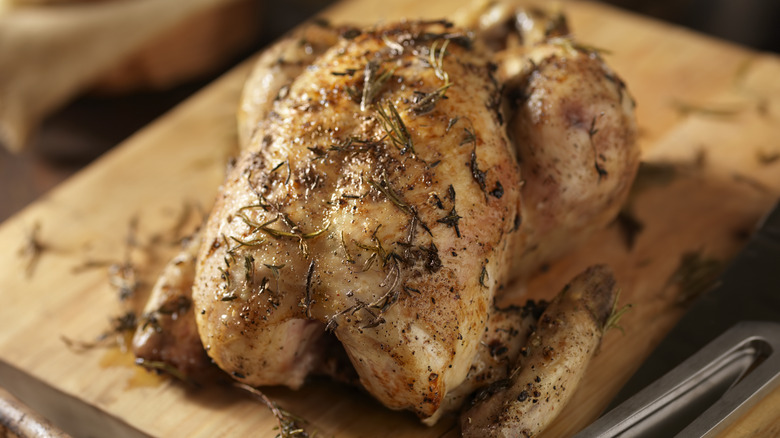For The Juiciest Roast Chicken, Make Sure To Flip It
Julia Child once said that the real test of any good cook is whether they can perfectly roast a chicken. And it's quite the feat. A classic roast chicken needs to be flavorful, tender, and encased in beautifully crispy skin. Above all, however, a roast chicken needs to be juicy. There are many ways to achieve this, but one of the best is to flip over your poultry. While it is more common to turn over a duck during roasting to render the fat out of the breast meat, flipping a chicken does something a little different.
Chicken, more so than duck, is a relatively lean meat. Chicken breasts, in particular, have a tendency to dry out before the legs and thighs have time to finish, thereby leaving you with a dried-out and undercooked bird. By turning over the chicken, you are allowing for more even juice distribution, thereby ensuring that the breast meat will not dry out before the rest of the bird is finished cooking. The timing on this is important because you don't want the bird to be flipped for too long, lest you sacrifice the ultra-crispy skin.
The correct way to turn over your poultry
One of the things you should do if you're planning on roasting a chicken this way is to truss it up. Trussing the bird, with or without string, will keep everything together, allowing for more even cooking and ease of handling. The chicken will then go into a hot pan, preferably a deep-sided cast iron skillet, in an oven heated to 425 degrees Fahrenheit. This will allow for a great seal on the skin. Lower the temperature to 375 and cook the bird breast-side up for about half an hour, just until the skin starts to brown.
Then, very carefully, flip the bird over, doing your best not to tear the skin. A great way to do this is to insert metal tongs directly into the large cavity and open them so that they are wedged into the ribs. Cook the chicken for another 10 to 20 minutes, depending on whether it's a three or four-pound bird, before returning it breast-side up for a final five to 10 minutes so the skin gets good and golden. Rest the chicken for at least 20 minutes so juices can redistribute throughout the meat.
Internal doneness for the breast meat should register at 165 degrees Fahrenheit and the legs and thighs come in at around 170 degrees Fahrenheit. All told, what you should have after doing this method is one crispy, juicy, Julia Child-approved roast chicken.

